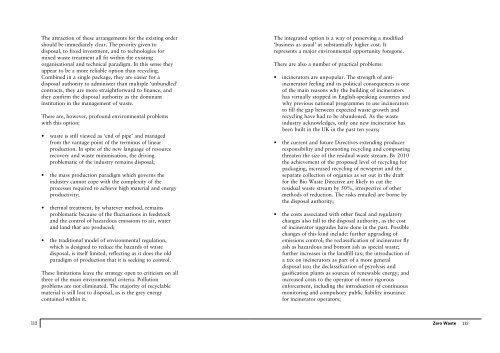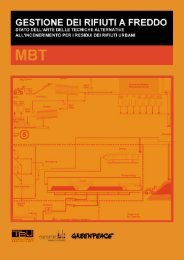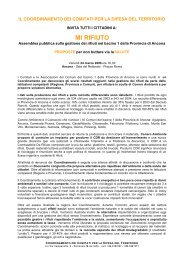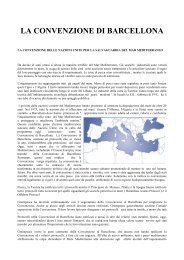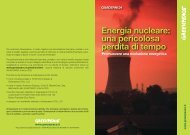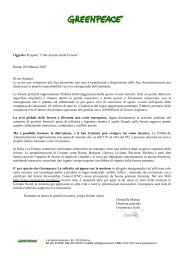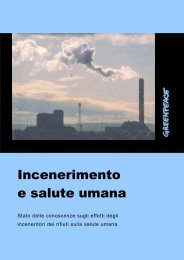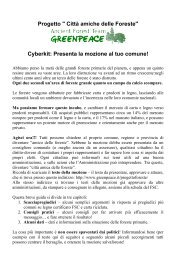Zero Waste by Robin Murray, Greenpeace Environmental Trust 2002
Zero Waste by Robin Murray, Greenpeace Environmental Trust 2002
Zero Waste by Robin Murray, Greenpeace Environmental Trust 2002
Create successful ePaper yourself
Turn your PDF publications into a flip-book with our unique Google optimized e-Paper software.
The attraction of these arrangements for the existing order<br />
should be immediately clear. The priority given to<br />
disposal, to fixed investment, and to technologies for<br />
mixed waste treatment all fit within the existing<br />
organisational and technical paradigm. In this sense they<br />
appear to be a more reliable option than recycling.<br />
Combined in a single package, they are easier for a<br />
disposal authority to administer than multiple ‘unbundled’<br />
contracts, they are more straightforward to finance, and<br />
they confirm the disposal authority as the dominant<br />
institution in the management of waste.<br />
There are, however, profound environmental problems<br />
with this option:<br />
• waste is still viewed as ‘end of pipe’ and managed<br />
from the vantage point of the terminus of linear<br />
production. In spite of the new language of resource<br />
recovery and waste minimisation, the driving<br />
problematic of the industry remains disposal;<br />
• the mass production paradigm which governs the<br />
industry cannot cope with the complexity of the<br />
processes required to achieve high material and energy<br />
productivity;<br />
• thermal treatment, <strong>by</strong> whatever method, remains<br />
problematic because of the fluctuations in feedstock<br />
and the control of hazardous emissions to air, water<br />
and land that are produced;<br />
• the traditional model of environmental regulation,<br />
which is designed to reduce the hazards of waste<br />
disposal, is itself limited, reflecting as it does the old<br />
paradigm of production that it is seeking to control.<br />
These limitations leave the strategy open to criticism on all<br />
three of the main environmental criteria. Pollution<br />
problems are not eliminated. The majority of recyclable<br />
material is still lost to disposal, as is the grey energy<br />
contained within it.<br />
The integrated option is a way of preserving a modified<br />
‘business as usual’ at substantially higher cost. It<br />
represents a major environmental opportunity foregone.<br />
There are also a number of practical problems:<br />
• incinerators are unpopular. The strength of antiincinerator<br />
feeling and its political consequences is one<br />
of the main reasons why the building of incinerators<br />
has virtually stopped in English-speaking countries and<br />
why previous national programmes to use incinerators<br />
to fill the gap between expected waste growth and<br />
recycling have had to be abandoned. As the waste<br />
industry acknowledges, only one new incinerator has<br />
been built in the UK in the past ten years;<br />
• the current and future Directives extending producer<br />
responsibility and promoting recycling and composting<br />
threaten the size of the residual waste stream. By 2010<br />
the achievement of the proposed level of recycling for<br />
packaging, increased recycling of newsprint and the<br />
separate collection of organics as set out in the draft<br />
for the Bio <strong>Waste</strong> Directive are likely to cut the<br />
residual waste stream <strong>by</strong> 50%, irrespective of other<br />
methods of reduction. The risks entailed are borne <strong>by</strong><br />
the disposal authority;<br />
• the costs associated with other fiscal and regulatory<br />
changes also fall to the disposal authority, as the cost<br />
of incinerator upgrades have done in the past. Possible<br />
changes of this kind include: further upgrading of<br />
emissions control; the reclassification of incinerator fly<br />
ash as hazardous and bottom ash as special waste;<br />
further increases in the landfill tax; the introduction of<br />
a tax on incinerators as part of a more general<br />
disposal tax; the declassification of pyrolysis and<br />
gasification plants as sources of renewable energy; and<br />
increased costs to the operator of more rigorous<br />
enforcement, including the introduction of continuous<br />
monitoring and compulsory public liability insurance<br />
for incinerator operators;<br />
112<br />
<strong>Zero</strong> <strong>Waste</strong><br />
113


